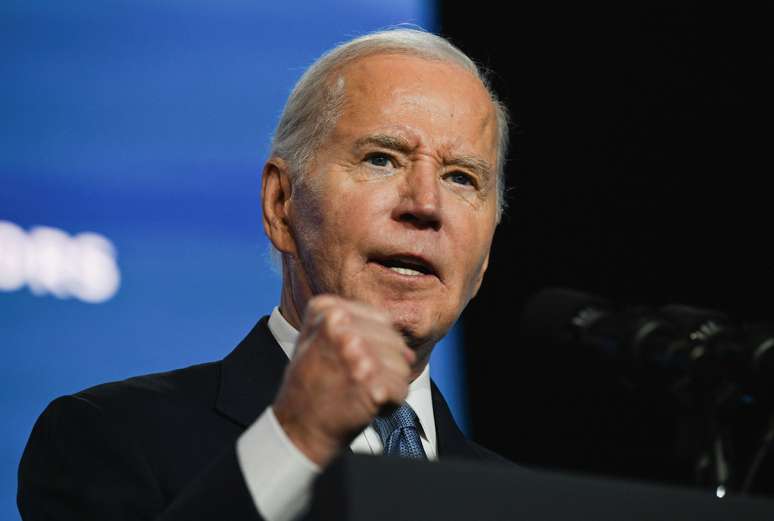In a clinical study presented in ASCO 2025, patients who remained active after cancer treatment had a relative reduction of 37% at risk of death
THE physical activity offers a series of advantages for people with Cancerduring and after treatment. From a clinical point of view, more and more work shows that exercise can reduce the risk of recurrence of the disease. Now, a large study presented during the ASCO 2025, the annual meeting of the American Society of Clinical Oncology, held in Chicago, in the United States, between May 29 and June 2, strengthens this recommendation.
Published June 1st a New England Journal of Medicine, Solid tests brings that a program of structured exercises can significantly improve the survival and quality of life of patients with colon -receipt carcinoma and has been considered a milestone in behavioral oncology.
The study Challenge (Change of colon health and physical exercise throughout life) was conducted over 15 years in 55 medical centers, in particular in Canada and Australia. During this period, the researchers accompanied 889 patients with colon carcinoma -retto who had undergone surgery for the resection of the tumor and ended to chemotherapy Aduvante – Standard procedure in the treatment.
They were randomly divided into two groups: one received only educational health and well-being material, while the other group has participated in a structured physical exercise program for three years, with professional follow-up and supervised sessions.
The results are remarkable: after a monitoring of almost eight years, the survival free from the disease in five years was 80.3% in the class that practiced exercises, against 73.9% in the control group. Global survival in eight years has been significantly higher among those exercised: 90.3% compared to 83.2% of the control. This represents a relative reduction of 37% in the risk of death or 6% in absolute terms, strengthening the clinical impact of this non -pharmacological intervention.
“This is a very significant difference. It is a very close result of what we have achieved with chemotherapy”, says the clinical oncologist Diogo Bugano, by the Israelite hospital Albert Einstein, who accompanied the presentation of the work in person in Aco.
“It is important to say that the exercise does not replace treatment and all patients in the study did chemotherapy, as well as physical activity. And the study shows that physical activity was as important as chemotherapy.”
The impact of the exercises
The exercise program has been carefully designed to promote the safe and effective practice of physical activity between cancer survivors. In the first six months, the patients participated in 12 face -to -face behavioral support sessions and 12 supervised training sessions, with the aim of reaching at least 10 physical activities from moderate to vigorous per week, the equivalent, for example, of 150 minutes of fast walk.
In the following two and a half years, the intervention was maintained with monthly sessions and remote support. The adhesion to the program was considered high, especially in the first 12 months and gradually decreased over the years, which has not yet prevented the positive effects on the survival of quality.
In addition to the benefits of survival, active patients have had coherent improvements in physical fitness, such as greater consumption of oxygen and greater distance traveled in walking tests. Auto -correlated physical function has also improved significantly, underlining gains in the quality of life.
It is interesting to note that the body weight and the abdominal circumference of the participants have no important changes, suggesting that the benefits of the year are more linked to the metabolic, inflammatory and immunological mechanisms than the loss of weight itself.
For Bugano, these results have a great relevance for medical practice, since they show that structured physical activity should be considered part of the treatment of cancer. “When chemotherapy ends, many patients ask what they can do to prevent the disease from returning. Now we have a solid proof that exercise has an essential role in this cure,” says the oncologist.
According to the expert, the exercise should receive the same attention as chemotherapy and the physical education professional has an important role as the oncologist himself in patient care.
But it is not necessary to be in a hurry or too much to accuse: in the study, the participants began to exercise on average three months after the end of chemotherapy and have maintained the practice for at least two years. “The results are not immediate, so there is no reason to blame. The important thing is to start, it is always time. This is a long -term commitment for your health,” says Bugano.
The diet also interferes
These results obtain even more relevance if analyzed with the data presented in the same congress on the role of the diet in the survival of patients with colon carcinoma -retto.
A Study conducted by Dana-Farber Cancer Institute expertsIn the United States, he analyzed the car -reeling diet of 1,625 patients and showed that those who maintained a food Based on products considered inflammatory (meat red, pig, ultra elaborate and some types of fish) had a risk of death of 87% higher than those that followed less inflammatory diets (based on vegetables, white meats and oils).
“The study specifically analyzed patients with cancer intestine And although he has not shown a reduction in disease recurrence, he has shown that a healthy diet is associated with less cancer and other causes “, explains Diogo Bugano.
This indicates that if cancer returns, the results tend to be worse in patients with inflammatory diet. The oncologist also underlines that it is an observational study, that is, it shows an important association, but does not establish a relationship of the cause and direct effect.
More and more frequent in young adults, Colon -Retto carcinoma should hit almost 46,000 people in the three -year period from 2023 to 2025 in Brazil, according to the latest estimates of the National Cancer Institute (Inca). Without considering non -melanoma skin tumors, it occupies the third position among the most frequent types of cancer in the country.
The combination of healthy diet and regular physical activity can therefore be a synergistic approach to improve the prognosis of patients with the disease. Doctors should also consider the “prescription” of a healthy lifestyle as part of the treatment of cancer. After all, it is not enough to treat cancer, it is necessary to take care of the patient in full, with a guide on behavior, nutrition and movement.
Source: Terra
Ben Stock is a lifestyle journalist and author at Gossipify. He writes about topics such as health, wellness, travel, food and home decor. He provides practical advice and inspiration to improve well-being, keeps readers up to date with latest lifestyle news and trends, known for his engaging writing style, in-depth analysis and unique perspectives.







